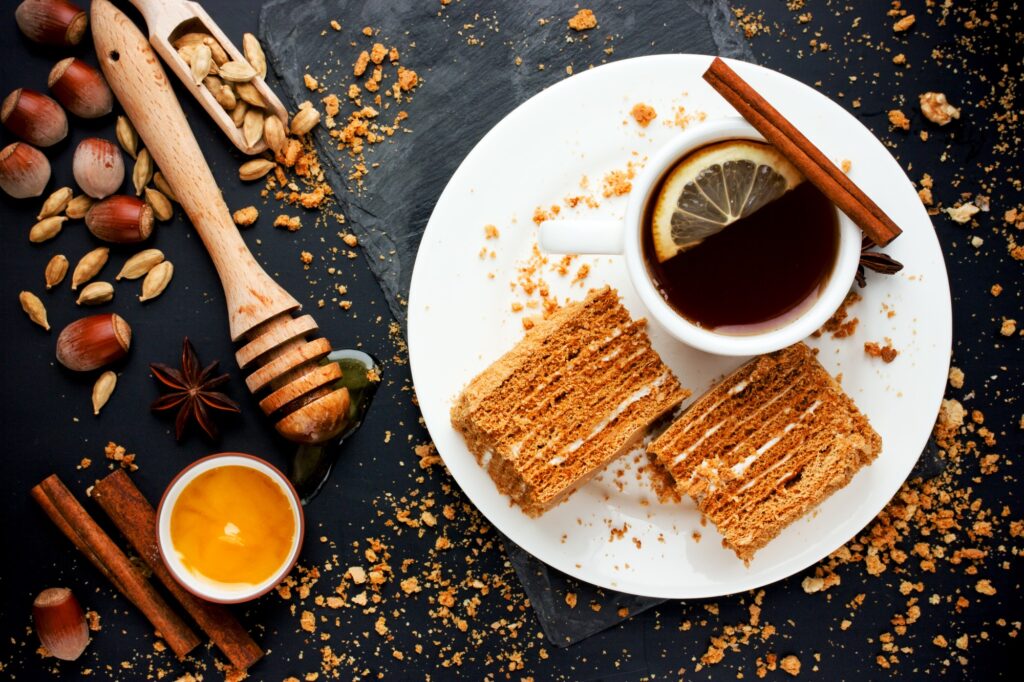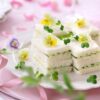
Step into a world of rich history and authentic flavors as we take you on an extraordinary journey through the realm of Russian tea. From its humble beginnings to its status as a beloved cultural tradition, Russian tea holds a special place in the hearts of its people.
The history of Russian tea
Russian tea has a history as rich as the flavors it embodies. While tea originated in China, it found its way to Russia through the ancient Silk Road. Traders and merchants introduced tea to the Russian nobility in the 17th century, and it quickly gained popularity among the upper classes. The demand for tea grew, leading to the establishment of the first tea plantations in the Russian Empire.
Tea became more accessible to the general population in the 19th century when tea imports increased and prices became more affordable. This marked the beginning of tea’s widespread consumption in Russia. Today, tea remains an integral part of Russian culture and is enjoyed by people from all walks of life.
The significance of tea in Russian culture goes beyond its taste and aroma. It serves as a symbol of hospitality, friendship, and warmth. The tradition of offering tea to guests is deeply ingrained in Russian customs, and a cup of tea is seen as a gesture of goodwill and camaraderie. Russian tea ceremonies, with their elaborate rituals and ornate teaware, are a testament to the reverence placed upon this cherished beverage.
The significance of tea in Russian culture
The traditional Russian tea ceremony, known as “zavarka,” is a captivating experience that reflects the country’s deep-rooted tea culture. At the heart of the ceremony is the samovar, a traditional tea brewing apparatus that has become synonymous with Russian tea. The samovar, with its elegant design and intricate details, takes center stage as the tea is prepared and served.
To prepare Russian tea, the samovar is filled with hot water, and a strong concentrate called “zavarka” is brewed separately in a teapot. The zavarka is made by steeping loose tea leaves in boiling water for several minutes, resulting in a strong and robust infusion. Once the zavarka is ready, it is poured into a teacup, and hot water from the samovar is added to dilute it to the desired strength.
The tea is then served with an array of traditional accompaniments, including lemon slices, sugar cubes, and jam. These accompaniments allow each individual to customize their tea according to their preference. The combination of flavors creates a harmonious balance that enhances the overall tea-drinking experience.
Ingredients and preparation of Russian tea
The key to an authentic Russian tea lies in the quality of the ingredients and the meticulous preparation. The most commonly used tea for Russian tea is black tea, specifically blends from India and Sri Lanka. The robust and full-bodied nature of black tea complements the rich flavors of the accompaniments.
To prepare Russian tea, start by boiling water in a samovar or a kettle. Meanwhile, add loose black tea leaves to a teapot and pour boiling water over them. Allow the tea to steep for 5-7 minutes, depending on the desired strength. Once the tea is brewed, strain it into a teacup or a glass.
To enhance the flavors, add a slice of lemon, a sprinkle of sugar, and a dollop of your favorite jam. Stir gently to combine the ingredients and allow the flavors to meld together. Sip slowly and savor the exquisite taste of Russian tea.
Traditional Russian tea accompaniments
Russian tea is often enjoyed with an assortment of accompaniments that elevate the tea-drinking experience. Lemon slices are a common addition to Russian tea, providing a tangy and refreshing twist. The acidity of the lemon complements the richness of the tea, creating a harmonious balance of flavors.
Sugar cubes are another staple in Russian tea. They add a touch of sweetness and allow each individual to customize the level of sweetness according to their preference. Just drop a sugar cube into your tea and watch it dissolve, releasing its sweet essence.
In addition to lemon and sugar, Russian tea is often enjoyed with a variety of jams. Raspberry, strawberry, and cherry jams are popular choices, adding a burst of fruity sweetness to the tea. The combination of the tartness from the lemon, the sweetness from the sugar, and the richness from the jam creates a symphony of flavors that dance on your taste buds.
Authentic Russian tea recipes
To truly experience the authentic taste of Russian tea, try your hand at one of these traditional recipes:
Classic Russian Black Tea
Ingredients:
– 2 teaspoons loose black tea leaves
– 1 cup boiling water
– Lemon slices, sugar cubes, and jam for serving
Instructions:
1. Add the loose black tea leaves to a teapot.
2. Pour boiling water over the tea leaves.
3. Allow the tea to steep for 5-7 minutes.
4. Strain the tea into a teacup or a glass.
5. Serve with lemon slices, sugar cubes, and jam.
6. Customize the tea by adding lemon, sugar, and jam according to your preference.
7. Enjoy the delightful flavors of Russian tea.
Russian Spiced Tea
Ingredients:
– 2 teaspoons loose black tea leaves
– 1 cup boiling water
– 1 cinnamon stick
– 2 cloves
– 1 cardamom pod
– Lemon slices, sugar cubes, and jam for serving
Instructions:
1. Add the loose black tea leaves to a teapot.
2. Pour boiling water over the tea leaves.
3. Add the cinnamon stick, cloves, and cardamom pod to the teapot.
4. Allow the tea to steep for 5-7 minutes.
5. Strain the tea into a teacup or a glass.
6. Serve with lemon slices, sugar cubes, and jam.
7. Customize the tea by adding lemon, sugar, and jam according to your preference.
8. Experience the warmth and spice of Russian spiced tea.
Where to find Russian tea and tea-related products
If you’re looking to experience the authentic taste of Russian tea, there are various places where you can find Russian tea and tea-related products. Russian specialty stores often carry a wide selection of teas from different regions of Russia. These stores may also offer samovars, teapots, and other tea accessories that will enhance your tea-drinking experience.
Online retailers specializing in international foods and beverages are another great source for Russian tea. They offer a convenient way to explore a wide range of tea options and have them delivered right to your doorstep. Additionally, you can find a variety of Russian tea recipes, books, and articles online, allowing you to further immerse yourself in the world of Russian tea.
Russian tea traditions around the world
Russian tea traditions have spread far beyond the borders of Russia, influencing tea culture in various countries around the world. In the United States, for example, Russian tea rooms became popular in the early 20th century, serving as gathering places for social events and tea parties. These tea rooms often featured samovars, ornate teaware, and a selection of Russian teas.
In Eastern Europe, countries like Ukraine, Belarus, and Kazakhstan have their own variations of Russian tea, reflecting their unique cultural influences. These countries have embraced the tradition of tea drinking and have incorporated it into their daily lives.
Even in countries where tea is not traditionally consumed, Russian tea has gained popularity. Tea enthusiasts from all corners of the globe have discovered the joy of Russian tea and have embraced its distinctive flavors and cultural significance.
Enjoy!
Russian tea is more than just a beverage; it’s a journey through time and culture. Its rich history, elaborate ceremonies, and exquisite flavors make it a truly remarkable experience. Whether you’re sipping a cup of Russian tea in the comfort of your home or exploring a tea room adorned with samovars, the essence of Russian tea will transport you to a world of warmth and hospitality.
So, take a moment to indulge in the enchanting world of Russian tea. Brew a cup using the traditional recipe, savor the flavors, and let yourself be captivated by the stories that each sip holds. Discover the magic of Russian tea, and let it become a part of your own tea-drinking traditions.






